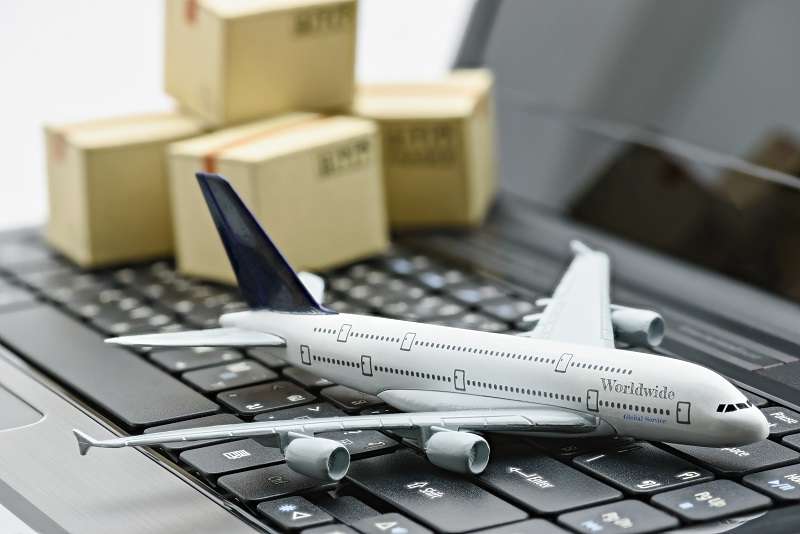Opportunities and challenges for export business in 2022

Although 2021 had its challenges, the year ended with better international trade prospects than 2020. A strong resurgence in global demand early in the year turned economic outlooks around for the better, and this trend looks set to continue into 2022.
Despite this, the headwinds of the past year are by no means over. Supply chain disruptions, inflation, and economic uncertainty persist in many countries. Export markets will likely feel that turbulence this year.
2022 will be pivotal for small business exporters as they look to consolidate on last year's gains. To help, we’ve compiled some of the key facts and stats to keep in mind. We’ve also included a summary of the best opportunities and core challenges to watch out for as you lay business plans for the year.
Table of Contents
Global export forecast in 2022
2021 was a mixed year for global trade. While there were initial concerns about the impact of COVID on international trade, exports and imports took off in early 2021 as consumers flexed their spending muscles.1 Global demand was so voracious that, by the third quarter, a new record was set as world trade value hit $5.6 trillion, according to UNCTAD.2
However, surging COVID variants, labor shortages, transportation woes, an energy crisis, and supply chain roadblocks remained a feature of the year. And expectations are that these constraints will continue into 2022. We are already seeing the effects of these challenges in the growing inflationary trend affecting economic activity around the world.3 The result is steeper transportation and manufacturing resources costs, among others.
Nevertheless, there are still projections of solid trade growth in the new year. Statista estimates global merchandise trade volume should rise by 4.7% in 2022.4 Likewise, IHS Markit says that global trade value should grow by 4.3% in 2022.5 While these figures are far behind the 10.8% recorded in 2021, they’re better than the -5.3% recorded in 2020.
These ups and downs are natural considering the difficulties posed by the global economic recovery. We expect they will be a feature of the rally as economic activity gathers steam worldwide.
5 opportunities for export business in 2022
Transformation experts believe that times of great change also bring immense opportunities, and the period we’re experiencing is no different. Small business owners and export companies are uniquely placed to benefit from the following growth prospects in 2022.

1. Reorganized supply chains
Before the pandemic, distributed supply chains were a central tenet of manufacturing. Companies sourced components from suppliers in regions worldwide, gaining cost-effective access to input products and manufacturing resources. But the peculiar challenges of COVID exposed these sourcing chains as fragile.
Now, there’s a move to remove the inherent risks in distributed supply chains as companies look to build resilience. Companies want to explore better and safer sourcing options, preferably closer to home. As the McKinsey Global Institute reports, roughly 15% to 25% of world trade may shift to new markets in the next five years.6
Essentially, global trade flows are about to change. Proactive exporters can take advantage by starting to build pedigree and showcase their dependable export services to would-be clients.
2. Increased uptake in e-commerce selling
The move to digital has been a critical feature of the global economic recovery so far. We expect this trend to continue in 2022. Sellers and buyers around the world now recognize the value of an extensive, always-on digital presence, and they are pivoting accordingly.
The fabric of global trade is changing, and the core access key to this new world is a digital platform. As one of the world’s largest B2B e-commerce platforms, Alibaba.com provides sellers with the digital tools they need to reach millions of potential clients globally. The platform gives businesses the information, fulfillment assistance, and technology they need to serve clients on a global scale from a single digital storefront.
Learn why Alibaba.com is the preferred B2B wholesale marketplace for millions of buyers and sellers worldwide.
3. New ASEAN trade agreement
A new Regional Comprehensive Economic Partnership (RCEP) between ASEAN countries and four non-member states took effect from 1 January 2022. The agreement is one of the most significant trade treaties globally in terms of population and GDP, says IHS Markit.5
Exporters trading with the bloc will be accessing roughly 29% of global GDP and 29% of the world’s population in one economic group. Accordingly, sellers from domestic markets within the region and foreign markets from without stand to gain impressive trade advantages.
While domestic sellers can look forward to a stronger bargaining position and reach, foreign sellers will anticipate being able to effortlessly access nearly a third of the global market under the RCEP.
4. EU-UK Trade and Cooperation Agreement
Similarly, the EU and UK have completed their Trade and Cooperation Agreement which formally commenced on 1 May 2021. The deal, which was a long time in the making, has settled many outstanding trade issues between the parties.
For instance, goods traded between the parties will be free of quotas and tariffs under the TCA. The agreement also includes provisions that lessen technical barriers to trade so the mutual flow of import and export products can accelerate.
Although the TCA has many rough edges, it’s still a move in the right direction. Therefore, import and export sales between the parties will likely benefit from the agreement.
5. Surging global trade
As mentioned earlier, worldwide consumer demand is holding firm. So, while businesses and individuals try to get back up to speed, we can expect the demand levels to continue.
Savvy exporters know that there’s no better time than this to position correctly and enjoy a slice of that global demand. With a digital platform, you can reach clients who need your services worldwide.
You can sell to US exporters, trade with companies in Russia, Mexico, and China, or enjoy broad access to global regions like Africa, North America, Latin America, and the Middle East without overstretching your operations.

5 challenges exporters face in 2022
The new year will bring opportunities, but challenges are frequently a part of growth. Here are some of the roadblocks that might confront exporters in 2022.
1. Infrastructure problems
Questions surrounding infrastructure typically face exporters every trade year. Clogged ports, bad roads, overextended railways, and unreliable shipping are longstanding problems in the industry.
These challenges take on a grimmer aspect in 2022 as the world continues to reel from the supply chain disruptions of 2021. Expect to see a continuation in the global shortage of containers and the increased shipping costs this is causing.
That’s not to say there’s no way around the problems. Proactive exporters will take advantage of free trade areas, friendly customs terms under free trade agreements, and helpful advice from federal agencies like the Small Business Administration (SBA).
2. Access to credit
Access to credit continues to be a challenge for small business owners. According to small businesses, as the World Bank reports, finance constraints are the second most cited obstacle to growth.7 And it doesn’t look like this challenge is going anywhere in 2022.
Exporters still need credit to finance manufacturing, stock purchases, and logistics pending the receipt of payment from customers. But due to the complex procedures involved, a distinct lack of information, and the high cost of the process, many businesses end up receiving less than they need or nothing.
As a result, those who excel in 2022 are likely to be companies that leverage expert knowledge and start planning their loan applications early.
3. Supply chain constraints
Global economic organizations are predicting that the difficulties of the past two years will take their toll on trade in 2022. This is unsurprising considering that many of the problems that began this economic depression persist.
Additionally, global trade is about to enter a tricky period, with the most recent trade agreement between the United States and China coming to an end. While there have been no trade spats between the countries recently, there’s uncertainty about how things will progress now that the treaty has ended.
Perhaps the best option for exporters will be to transact business as if the worst trade issues possible are on the horizon. Stock up on critical input products in advance and de-risk your supply chains as much as possible, including maintaining a digital B2B presence.
4. Global inflationary trend
Another difficulty facing exporters in the new year is the recent inflationary trend worldwide. Regions and countries are recording high inflation figures from the US to the EU, Argentina, Africa, and elsewhere.
The UN says much of this trend is fuelled by ongoing supply chain constraints, which have also helped keep prices high.8
There’s no certainty about when the inflationary trend will turn downwards in 2022 or how that will happen. But there’s still some optimism that the market will correct itself.
5. COVID-19
Although it feels like with steadily rising global vaccination rates, we’re gradually seeing the end of COVID; the pandemic is still a challenge. The recent surge in new infections driven by the Omicron variant has particularly proved worrying.
Many countries have had to re-impose some form of public restriction, including lockdowns in some places. We know how detrimental these health restrictions can be to business, but there’s good news.
Omicron is thought to be less severe than first feared, meaning the threat may be milder than previous variants. The situation still bears watching, though, and the position for exporters must be one of readiness to pivot from physical sales to digital and back again as the circumstances demand.
Start your export business on Alibaba.com
From the start of the global disruption of 2020 and throughout 2021, Alibaba.com has supported exporters to beat supply chain roadblocks and expand their business. With the digital platform we provide, you have the perfect tool to reach buyers anywhere in the world.
Become an Alibaba.com global seller today and start selling on the world’s largest B2B marketplace. Here’s how to get started.
References:
1. https://www.wto.org/english/news_e/pres21_e/pr889_e.htm
2. https://unctad.org/news/global-trade-goods-hits-all-time-quarterly-high-56-trillion
3. https://theconversation.com/world-economy-in-2022-the-big-factors-to-watch-closely-174350
4. https://www.statista.com/statistics/1280703/trade-volume-forecast-worldwide/
5. https://ihsmarkit.com/research-analysis/Global-Trade-Outlook-2022.html
6. https://www.wto.org/english/res_e/booksp_e/wtr21_e/00_wtr21_e.pdf
7. https://www.worldbank.org/en/topic/smefinance
8. https://www.un.org/development/desa/dpad/publication/world-economic-situation-and-prospects-2022/
Start your borderless business here
Tell us about your business and stay connected.
Keep up with the latest from Alibaba.com?
Subscribe to us, get free e-commerce tips, inspiration, and resources delivered directly to your inbox.















